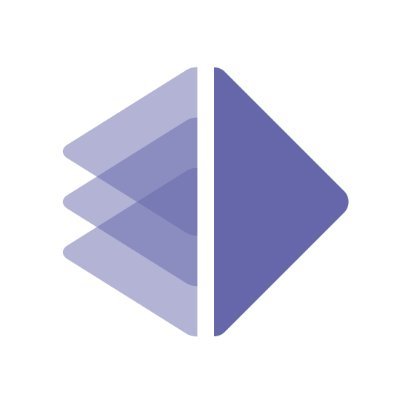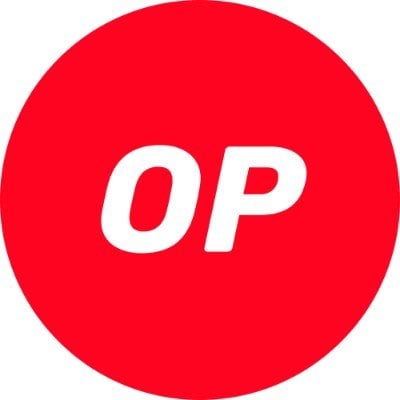AltLayer CEO EthCC Speech Review: How Should the "Rollup as a Service" Model Improve Profitability?
Author: Ken, AltLayer
Compiled by: Deep Tide TechFlow
In the structured process of the presentation, YQ starts with the reasons we need RaaS, followed by an introduction to the types and economics of RaaS, so that users can better understand Rollups-as-a-Service.
Today, the paradigm has shifted from monolithic to modular, where we split the entire stack into different layers.
It is clear that Ethereum has also shifted to a Rollup-centric approach, where Ethereum will transfer execution tasks to Rollups and become a DA Layer (Data Availability Layer) in the long term.

Currently, the landscape of execution layers has significantly expanded.
There are several types of execution layers, such as Optimistic and zero-knowledge based general types.
At the same time, we also have Rollups tailored for specific applications, serving various dApp domains such as gaming, non-fungible tokens (NFTs), social, etc.

However, too many execution layers can lead to confusion for developers.
Moreover, integrating software development kits (SDKs) into the current tech stack and attaching Layer 2 (L2) to Layer 1 (L1) also poses challenges for developers.
This is why we need RaaS providers.

For RaaS providers, we can think of them as software-as-a-service companies, as they integrate SDKs and different tech stacks into their solutions.
If developers want to launch a Rollup for Ethereum, they can quickly create a Rollup using RaaS and publish data to Ethereum.

We can see that the RaaS ecosystem is also very broad, including providers that offer SDKs, shared sequencers, and no-code tools to launch Rollups.
Today, using no-code dashboards, developers/users can launch a Rollup in just a few minutes, which is a significant improvement compared to 6-7 years ago.

RaaS brings many benefits, such as flexibility, low cost, and rapid deployment. As mentioned earlier, dApps can create fully customized Rollups in minutes.
For Web2 developers who are not familiar with blockchain and Solidity, they can also leverage this no-code framework to develop with confidence.

RaaS can be compared to AWS in the crypto industry, as developers can quickly create Layer 2 without worrying about the underlying details.
But how can we profit from RaaS solutions?
One idea is to adopt a SaaS model, where providers charge fees directly when developers create Layer 2, similar to AWS/GitHub.

The SaaS model is straightforward and has mature payment solutions, such as Stripe and cryptocurrency payments through Coinbase.
We can also adopt a tiered pricing approach, combining free and paid models, providing free credits to developers and users, and then charging based on actual usage.

Although the SaaS model is simple and advantageous, applying this model to RaaS in the crypto space may face some complexities.
Therefore, to better understand the economics of RaaS, we will analyze the steps, costs, and revenues of Rollup and RaaS.
Starting with the workflow of Rollup, the process involves aggregating user transactions by a sequencer, executing transactions, bundling blocks, and submitting data to Layer 1 (L1).
Typically, there are also fraud/validity proofs on L1, where a smart contract is used to verify proofs and challenge the sequencer.

As we have experienced when using Optimism, Arbitrum, and other platforms, it is clear that fees can vary significantly based on the time period of executing transactions.
Fees are not fixed, as we pay not only for L2 but also for the costs incurred when the sequencer publishes data to L1.

It should be clarified that L2 fees are fixed because they can handle a large number of transactions off-chain.
However, since data is published to L1 periodically, it depends on the number of transactions processed during that period. If there are a large number of transactions, the average fee will be lower, while if there are only a few transactions, the fees will be higher.

For most L2 solutions, when data is published, additional fees are incurred due to the uncertainty of L1's gas fees.
According to data, Optimism and Arbitrum have earned millions by subtracting the fees charged to users from the fees paid to Ethereum for storing data.

Delving into the economic model of Rollup, here is the profit composition of a general Rollup:
- User Fees: L1 data publication fees + L2 operator fees + L2 congestion fees (high traffic);
- Operator Costs: L2 operator fees + L1 data publication fees;
- Operator Revenue: User fees + MEV (Miner Extractable Value);
- Operator Profit: L2 congestion fees + MEV.
As a RaaS (Rollup as a Service) provider, if we offer similar services to run general L2, then the revenue, costs, and profits should be quite similar.
In practice, there are some subtle differences in operator revenue, as we can charge service fees from clients (e.g., gaming and NFT projects).

However, most dApps prefer to have their own chains that are application-specific and offer zero gas fees to provide a seamless user experience.
Therefore, RaaS providers cannot charge user fees and MEV (first-come, first-served priority), resulting in overall profits being much lower than providing general L2.

Thus, the operator profit formula for RaaS providers is as follows:
- General L2: U+S-O-D
- Specific Applications: S-O-D
U = User Fees; S = Operator Costs; O = L2 Operating Costs; D = L1 Data Publication Costs.
We can try to increase operator profits by increasing U, S (applying the SaaS model) and reducing O, D (cost-effective alternatives like @eigenlayer and @CelestiaOrg's DA).

After discussing the economic model of RaaS, YQ shared his views on the costs of RaaS providers based on his experience.
For RaaS costs, they are mainly attributed to L2 operations, typically the sequencer and validators, as well as DA costs.

According to his findings, the costs of the Optimistic approach are much lower than those of zero-knowledge proofs, as there is no need to run expensive machines to generate proofs.
However, there are also trade-offs, as ORU (Optimistic Rollup) has a longer challenge period and requires more consideration regarding data publication.

In the current state of RaaS, there are various pricing plans available, such as fixed pricing, tiered pricing, and other models, which are closely related to use cases (like NFT minting and gaming).
Additionally, free credits may also be offered to partners.

For real-world application cases of RaaS, AltLayer has been developed for nearly two years. During this time, many projects have utilized AltLayer to launch Rollups to support NFT events, NFT ticket sales for football matches, and Darkforest competitions, among others. In these cases, we adopted a SaaS payment model.

YQ also introduced the Beacon Layer, which distinguishes AltLayer from traditional Web2 SaaS and brings decentralization into the RaaS space.
It can be seen as an orchestration layer, where the Beacon Layer allocates dedicated operators when users request to launch a Rollup.

The first version of AltLayer's RaaS Launchpad allows users to launch Rollups in a centralized manner.
However, subsequently, through the Beacon Layer, it will become decentralized, as anyone can join the network as a sequencer and have the opportunity to be selected to provide services for dedicated Rollups.















